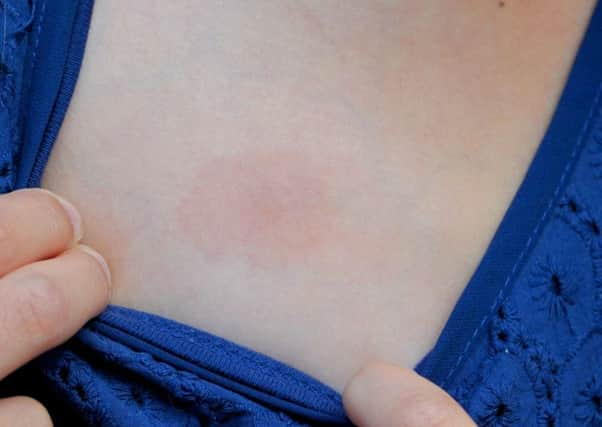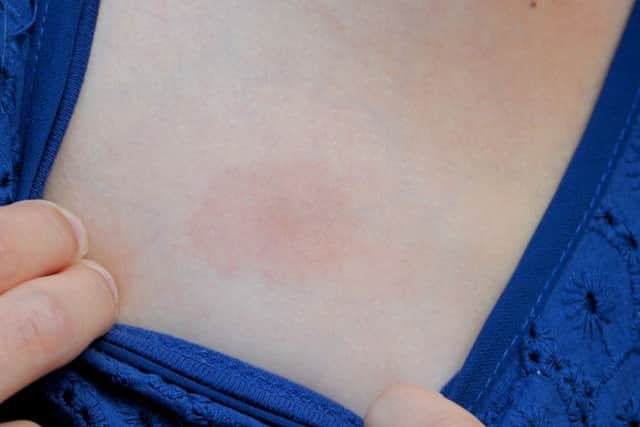REGIONAL: Warning issued over Lyme disease in the south of England


The National Institute for Health and Care Excellence (Nice) said some areas appear to have higher prevalence of infected ticks which cause the disease.
But the health body said prevalence data is incomplete as it called for a large study into the condition in the UK.
Advertisement
Hide AdAdvertisement
Hide AdBetter information on incidence, presenting clinical features, management and outcome of Lyme disease both in hospitals and GP services will mean that services can be tailored to suit those infected, Nice said.


Last month former England rugby captain Matt Dawson revealed how he underwent heart surgery after being bitten by a tick carrying Lyme disease - just one of an estimated 2,000 to 3,000 new cases in England and Wales each year.
But Nice said this could be an underestimation because there is no requirement for GPs or hospital clinicians to report the number of cases.
A new draft guideline from Nice states: “Infected ticks are found throughout the UK and Ireland, and although some areas appear to have a higher prevalence of infected ticks, prevalence data are incomplete.
Advertisement
Hide AdAdvertisement
Hide Ad‘Particularly high-risk areas are the South of England and Scottish Highlands but infection can occur in many areas.’


It has also set out a series of recommendations on how the condition can be assessed and treated.
These include: diagnosing people who present with a distinctive rash - often described as looking like a bulls eye on a dart board - without needing to refer them for further tests.
Medics have also been urged not to rule out Lyme disease if a person who has symptoms of the disease is unsure whether they have been bitten by a tick.
Advertisement
Hide AdAdvertisement
Hide AdAntibiotics should be used to treat the condition but if symptoms persist after treatment, a GP should consider a referral to a specialist, the guideline adds.
‘Lyme disease may be difficult to diagnose as people can have common and unspecific symptoms, like a headache or fever, and they may not notice or remember a tick bite,’ said Professor Saul Faust.
‘Our draft guidance will give GPs and hospital doctors clear advice on how to diagnose if they think Lyme disease is a possibility,’ said the professor of paediatric immunology and infectious diseases at the University of Southampton who also chairs the guideline committee.
It emerged in August that former England rugby captain Matt Dawson underwent heart surgery after being bitten by a tick in a London park.
Advertisement
Hide AdAdvertisement
Hide AdThe 44-year-old developed feverish symptoms after visiting the park early last year and was later diagnosed with Lyme disease, he told the BBC.
Dawson is now free of the disease, having undergone multiple heart operations and endured 18 months of treatment.
The bacterial infection, caused by infected ticks, can lead to conditions such as meningitis or heart failure if left untreated.
Ticks can be found in woodland and heath areas.
The tiny spider-like creatures, which can carry the bacteria responsible for the disease, are found throughout the UK and in other parts of Europe and North America.
Advertisement
Hide AdAdvertisement
Hide AdCases of Lyme disease have been reported throughout the UK, according to NHS Choices.
Areas known to have a particularly high population of ticks include: Exmoor, the New Forest and other rural areas of Hampshire, the South Downs, parts of Wiltshire and Berkshire, parts of Surrey and West Sussex, Thetford Forest in Norfolk, the Lake District, the North York Moors and the Scottish Highlands.
Not everyone who gets bitten by a tick will be infected with Lyme disease as only a small proportion carry the bacteria which causes the condition.